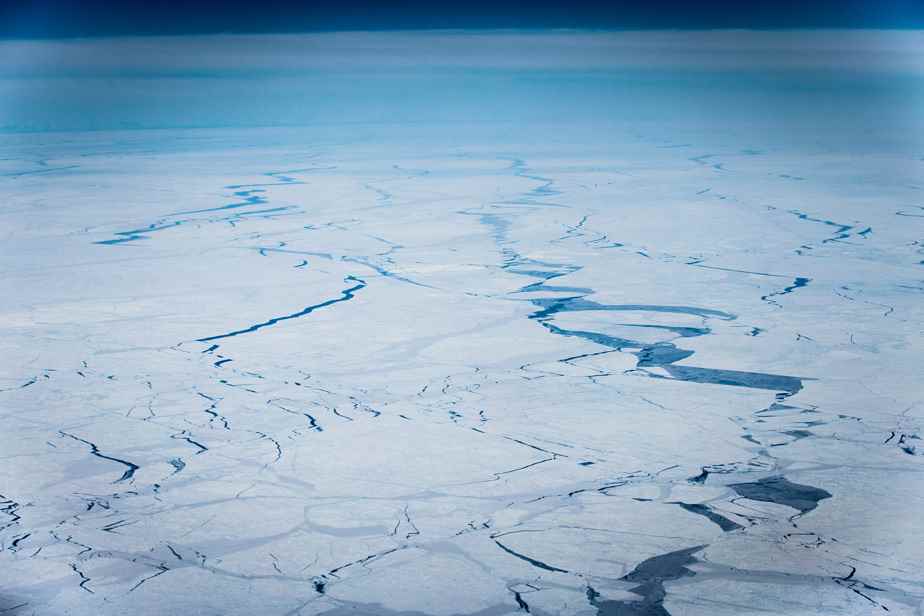Posted at 12:00 a.m.
Methane or CO2
Arctic permafrost is one of the hotspots of global warming. These permanently frozen soils are home to a lot of organic matter which, as it thaws, decomposes and releases methane, a particularly powerful greenhouse gas. But the phenomenon is counterbalanced by a change in microbial populations in favor of species that feed on methane.

PHOTO FROM SCOTTY CREEK RESEARCH STATION SITE
Oliver Sonnentag, in a soil gaseous emission capture station
“We are monitoring gaseous emissions from the soil on a 2,000 km network stretching from Saskatchewan to the Arctic,” explains Oliver Sonnentag, of McGill University, contacted in Yellowknife. “You see more methane in the south, but in the north it’s more limited because of bacterial changes. Methane Feeding Microbes Release CO2a phenomenon counterbalanced by the capture of CO2 atmospheric by the plants, which grow more because of the longer and hotter summers. Mr. Sonnentag’s project provides for the training of Aboriginal people who maintain the collection stations and collect the data every month during the winter.
Tidal turbines and freezing
Solar energy is poorly suited for the Arctic, because the days are very short in winter. Wind turbines suffer from frost, as do tidal turbines (powered by the current of rivers and rivers). The Canadian subsidiary of an American tidal turbine firm wants to remedy this problem.

PHOTO PROVIDED BY ORPC CANADA
A tidal turbine is tested by ORPC in the Kvichak River, Alaska.
“Canada’s hydrokinetic potential is very great,” explains Alexandre Paris, who heads ORPC Canada. “In Quebec, many large Hydro-Quebec suppliers could manufacture tidal turbines. We have been testing a tidal turbine in Alaska for three years, and it works well. We are also doing tests this summer at a federal research center in Ottawa and we are collecting hydrological data on sites in Nunavik. The challenge for tidal turbines in the Arctic is “frazil”, a state between water and ice that can lead to the formation of blocks of ice on the structures.
Microbes like on Mars
At McGill University, Lyle White compares Arctic microbes to those that might be found on Mars or Jupiter’s moon Europa, which has an ocean under an ice cap.

PHOTO FROM MCGILL UNIVERSITY WEBSITE
Lyle Whyte in the Arctic with fellow biologist Nadia Mykytczuk of Laurentian University
“We’ve found a microbe that holds the record for breeding temperature,” says White, who is doing his work at McGill’s High Arctic Research Station on Axel Heiberg Island, Nunavut.

PHOTO FROM THE EUREKALERT WEBSITE
The Lost Hammer Hot Spring
“It can breed at -15 degrees. More recently, White and colleagues described bacteria that can feed on methane in the Lost Hammer Hot Spring on Axel Heiberg Island. These bacteria could come into action if there are oil spills in the Arctic, due to the exploitation of deposits or maritime traffic.
Bylot Island Geese
In the 1980s, one of the largest populations of greater snow geese in the world, on Bylot Island in the Baffin Sea, suddenly exploded. The phenomenon was observed because a research station had been there since the 1950s. “We decided to look at the effect on the ecosystem of the island, which means that we have detailed data on more than 30 years,” explains Pierre Legagneux, from Université Laval. “The goose population has stabilized, but we don’t see any impact on the vegetation. We try to understand what is going on. »

PHOTO DOMINIQUE BERTEAUX, FROM THE ARCTIC GEESE JOINT PLAN WEBSITE
Greater snow geese in Bylot Island
This is valuable data for understanding the impacts of climate change. “Elsewhere, lemming populations have been observed to suffer from increased winter rain, which hardens the snow surface. We haven’t seen that yet, but we’re still monitoring if it happens on Bylot Island as well. »
Marine forests
The Arctic may not have large forests, but its seas have “forests” of kelp, a brown seaweed where many fish and animals hide and find food.

PHOTO FROM LAVAL UNIVERSITY WEBSITE
A “forest” of arctic kelp
Philippe Archambault, from Laval University, is a specialist in Arctic kelp, which by 2050 should become more abundant in southern Hudson Bay and on the Labrador coast, among others. His team notably carries out training activities on the importance of kelp for Inuit communities.
Plastic and Kittiwakes
McGill doctoral student Julia Baak is spending her summer in Iceland, where she attaches geolocation sensors to the legs of kittiwakes to track their annual migrations.

PHOTO FROM JULIA BAAK’S TWITTER ACCOUNT
Julia Baak with a Kittiwake
“We will then assess whether they are affected by plastic pollution and if so, see where these contaminants come from in their route. »

